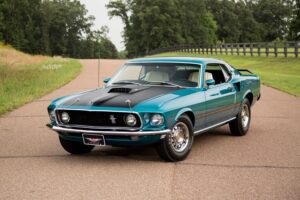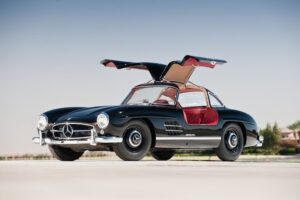This blog post is a guest post about Custom Classic Vintage Car Models That Makes for a Great Display. I do not know much about vintage car models, so I thought this would be a great opportunity for me to learn something new. I am eager to find out why the greatest pride of every collector, no matter the items collected, isn’t just the quantity, specification, look, or even the price of a product.
Introduction to Custom Classic Vintage Car Models
The greatest pride of every collector, no matter the items collected, isn’t just about the quantity, the detailed specification, the look, or even the price of a product. True collectors are very meticulous with regards to the quality of each item, as they consider these items as “investments,” and “prized possessions,” to be appreciated for a very long time.
The amazing process of car model making
 The greatest pride of every collector, no matter the items collected, isn’t just about the quantity, the detailed specification, the look, or even the price of a product. True collectors are very meticulous with regards to the quality of each item, as they consider items as “investments,” and “prized possessions,” to be appreciated for a very long time.
The greatest pride of every collector, no matter the items collected, isn’t just about the quantity, the detailed specification, the look, or even the price of a product. True collectors are very meticulous with regards to the quality of each item, as they consider items as “investments,” and “prized possessions,” to be appreciated for a very long time.
Being a collector is not a cheap hobby, but it’s definitely very rewarding. The act of collecting is even said to be an intellectual pleasure because it’s not merely about stocking on items, but also learning about it, appreciating it and the craftsmanship put into it, as well as keeping it as “timeless pieces” that will transcend time.
One of the highly desirable collections is the model car collection. Luxury, exotic, or vintage cars are out of reach to anyone but the wealthiest, and most profligate individuals. That is why collecting cars can also bring high satisfaction and happiness. In a way, it’s also a personal achievement. To men, miniature car masterpieces can set their pulses racing.
Model makers, or model fabrication companies are behind the custom-built models. Only skilled craftsmen who have had a lot of experience in this particular field can make the best pieces. It usually takes a long process – even hundreds of hours – just to complete ONE car model. Just imagine the amount of work put into a small item.
Customers will always want available options, such as a fully custom paint scheme, custom interior details, and just about any customization humanly possible! A car model starts with a simple idea (for replicas with additional customizations), or a photo or blueprint (for replication). Model makers build it FROM SCRATCH, and painstakingly hand-carve every piece using solid and high-quality wood, resin, tin, steel, cast iron, plastic, etc.
It is also painted by hand so craftspersons do not omit even the smallest details. Clients have the option of providing digital pics and indicating their preferences regarding colours and other specs.
Timeless and classic cars
Model car collectors, especially those new to the hobby of collecting may find it difficult to decide on a particular car to collect, or a variety to focus on. Perhaps one way to get started is to collect vintage pieces (if it’s not one of the interests, then one may opt for another concept), which are incredibly rare, interesting, and a bit nostalgic. Here are the best vintage and classic vintage car models which would certainly make for a great display as a custom model:
1969 Ford Mustang Mach 1 428 Cobra Jet
 A Ford (and underrated) version of a Shelby GT500. This model is said to be a Mustang that looked the part of a “modern pony muscle car.” This 1969 Ford Mustang Mach 1 428 Cobra Jet, a mainstream performance car, came with a 4-speed manual gearbox and a 428-CID V-8 engine, but the star of the stable was the optional 428-CID Cobra Jet. Described as the “fastest car, fastest running pure stock car in the history of man” by Hot Rod magazine, the 428 Cobra Jet was introduced on the 1st of April, 1968 and ran for three glorious years, providing Ford with real competition for the toughest muscle cars of the day. The Mustang had a restyle in 1970, with single headlamps inside the grille, and additional simulated air intakes at both front and rear end. This model is a hugely popular edition of the fastback body style, which most men can appreciate to this day.
A Ford (and underrated) version of a Shelby GT500. This model is said to be a Mustang that looked the part of a “modern pony muscle car.” This 1969 Ford Mustang Mach 1 428 Cobra Jet, a mainstream performance car, came with a 4-speed manual gearbox and a 428-CID V-8 engine, but the star of the stable was the optional 428-CID Cobra Jet. Described as the “fastest car, fastest running pure stock car in the history of man” by Hot Rod magazine, the 428 Cobra Jet was introduced on the 1st of April, 1968 and ran for three glorious years, providing Ford with real competition for the toughest muscle cars of the day. The Mustang had a restyle in 1970, with single headlamps inside the grille, and additional simulated air intakes at both front and rear end. This model is a hugely popular edition of the fastback body style, which most men can appreciate to this day.
1970 Datsun 240Z
This is one of the most popular Japanese sports cars in America. Needless to say, cars like these have become the most sought after classic whips among connoisseurs and speed freaks. These Japanese marvels come with a smooth six-cylinder engine and a gorgeous styling that seemed to be based on the 250 GT Ferrari or a Jaguar E-Type. It offers performance, comfort, style, and reliability that rivalled the European imports, which dominated the car industry when it comes to exotic horsepower. It doesn’t hurt that it also excels in its longevity, as it can easily move from one generation to another. Global icons such as Jay Leno, Adam Carolla, and Paul Newman are huge fans.
1961 Jaguar E-Type
This famous British sports car is the combination of beauty, performance, and competitive pricing – leaving everyone stunned up to this very day. The 1961 Jaguar E-Type offers 150 mph (241 km/h) top speed, sub-7-second 0 to 60 mph (97 km/h) acceleration, monocoque construction, disc brakes, rack-and-pinion steering, and independent front and rear suspension distinguished the car and spurred industry-wide changes. This particular model (Coupe or Open Two Seater) offered a removable hardtop, making it definitely cool. It’s a crowd-drawer and a massive ego booster. One that stuns in the road, or even on the shelf.
1964 Aston Martin DB5
 An iconic model that’s Hollywood-famous. This grand tourer, a slight upgrade from Aston Martin’s previous DB4 model, is most recognized as James Bond’s car. Its specifications are incredible, given it has a 3,995 cc (or 4.0 L) inline-6, 286 PS, 210 kW at 5,500 rpm net HP. The top speed of this 1964 Aston Martin DB5 is 145 mph or 233 km/h. This model first appeared as Sean Connery’s vehicle in the 1964 James Bond film Goldfinger, and it went on to appear in Thunderball, GoldenEye, Tomorrow Never Dies, Casino Royale, Skyfall and Spectre. This is also included in different video games such as 007 Racing, Agent Under Fire, From Russia With Love, and Blood Stone.
An iconic model that’s Hollywood-famous. This grand tourer, a slight upgrade from Aston Martin’s previous DB4 model, is most recognized as James Bond’s car. Its specifications are incredible, given it has a 3,995 cc (or 4.0 L) inline-6, 286 PS, 210 kW at 5,500 rpm net HP. The top speed of this 1964 Aston Martin DB5 is 145 mph or 233 km/h. This model first appeared as Sean Connery’s vehicle in the 1964 James Bond film Goldfinger, and it went on to appear in Thunderball, GoldenEye, Tomorrow Never Dies, Casino Royale, Skyfall and Spectre. This is also included in different video games such as 007 Racing, Agent Under Fire, From Russia With Love, and Blood Stone.
1955 Lincoln Futura
This concept car was designed by Lincoln (a Ford brand), designed by Ford stylists Bill Schmidt and John Najjar, and built by Ghia Bodyworks in Italy is the design of the Batmobile a.k.a. Batman’s cool car! When Lincoln was losing ground, they conceptualized an attention-grabbing car with distinctive double-bubble canopies, long fins, and many automotive firsts. This instantly became a hit, unique car that put the company back on the map. It was featured in different books, magazines, and newspapers, and was adored by those who saw it.
The original 1955 Lincoln was never meant to be a Batmobile, but when the car’s eventual owner George Barris was tasked with building the iconic vehicle, he thought it was a good idea to transform the car into Batman’s famous crime-fighting vehicle. It was modified in three weeks’ time at a reported cost of $30,000 and was leased to 20th Century Fox and Greenway Productions for use in the series.
1957 Mercedes 300SL Gullwing
 If the Batmobile had a cousin, this would be it. This model was said to be the first iteration of the SL-Class grand tourer and the fastest production car of its day. It had distinctive gull-wing doors, as made evident in its name, and was later offered as an open roadster. It is a very cool sports car with a 2996 cc M198 I6 engine, first-ever production fuel injection, and the world’s fastest top speed.
If the Batmobile had a cousin, this would be it. This model was said to be the first iteration of the SL-Class grand tourer and the fastest production car of its day. It had distinctive gull-wing doors, as made evident in its name, and was later offered as an open roadster. It is a very cool sports car with a 2996 cc M198 I6 engine, first-ever production fuel injection, and the world’s fastest top speed.
It also featured an innovative diagonal aluminium head that allowed for larger intake and exhaust valves, which fit under the 1957 Mercedes 300SL Gullwing’s low hood line.
Imagine having a miniature car model of this classic vehicle with working gullwing doors. It would undoubtedly be one of the first cars someone can introduce to family and friends, to excite them.
How old must a classic car be in order for it to be ‘classic?’
The answer actually depends on who you ask. Some say the cut-off date for a classic car is currently the 1st of January 1977, although there are plenty of people who could argue cars built after this year still fall under the category (ex. MG B GT, MkII Escort, etc.)
For a different perspective, one can look at Her Majesty’s Revenue and Customs. They say classic cars are cars that are worth £15,000 or more, and aged 15 years or older. The price and age are important factors that could determine the desirability and its “classic candidacy.”
Still, those who appreciate and acknowledge automotive know that the definition of “classic” will definitely change with time. Soon, the new cars will have a nostalgic sound, as new innovations shape the industry.
CONCLUSION
People who collect real classic vintage cars (not just custom-built models) feel that owning the vehicle gives some sort of “icon status.” In fact, something that will never see the scrap yard can be considered a classic. They’re seen not as mere modes of transportation, but as coveted family heirlooms, to be passed on and appreciated by the generations to come.
Classic vintage cars are often as interesting as the people who collect them.
***
This guest post was written by and published with the permission of ModelWorks Direct.
ModelWorks Direct is owned and operated by a team of architects, fabricators, and builders. The senior partners of the company have over 40+ years of experience in Model Fabrication and Fabrication. ModelWorks custom builds model aircraft, ships, cars, and just about anything under the sun.





Thank you so much for this enlightening post, I have significantly got some thing right here and I will bookmark this page for your next upcoming post.